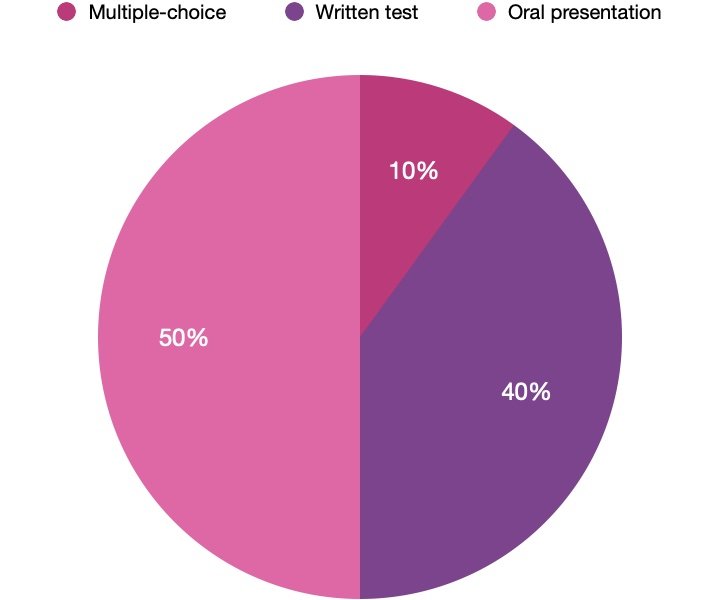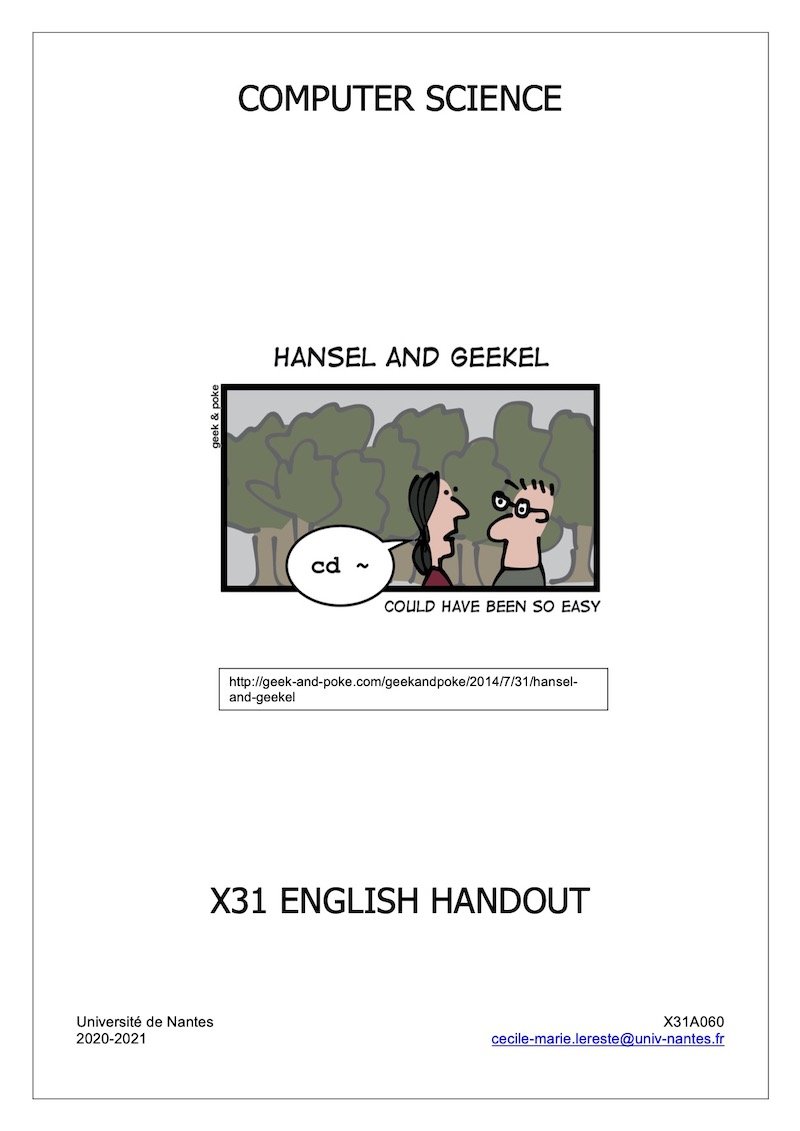
Image credit: iats.org
ENGLISH FOR COMPUTER SCIENCE
This course is divided into twelve 80-minute sessions, and designed to provide students with the tools, knowledge and practice to deliver a scientific presentation at the end of the semester.
COURSE CONTENTS
| # | SKILLS AND ACTIVITIES |
|---|---|
| 1 | Listening: Big-O Notation |
| Speaking: Pronunciation of technical terms | |
| 2 | Listening & Writing: Note-taking and summarizing |
| 3 | Listening: Press reviews |
| 4 | Listening: Enigma |
| Speaking: Stress | |
| Vocabulary building: Colloquial vocabulary for presentations | |
| 5 | Writing: Process descriptions |
| Vocabulary building: Explaining the structure of presentations | |
| 6 | Listening & Speaking: Points of view / Debating |
| Writing: Punctuation | |
| 7 | Listening & Reading: Algorithms |
| Speaking: Intonation | |
| 8 | Listening: Digital Art |
| Presentating: Effective delivery | |
| 9 | In-class preparation |
| 10, 11, 12 | Presentations |
ASSESSMENT
The module is assessed through 100% continuous assessment. You will be assessed on:

- Two written tests (50% of the final grade)
- One multiple-choice language test for which you will prepare using the distance learning activities on MADOC. This will count for 10% of the final grade (20% of the written grade) and will be taken on MADOC. Your group teacher will tell you when to take the test.
- One written test that will combine listening comprehension and writing. You will be given an audio document that will be between 15 and 30 minutes long. You will have to write a summary on the contents of the document in your own words (250 words, +/- 10%). The document will be made available on MADOC at a date your group teacher will specify. You will have two days from then to upload your text on the submission space on MADOC. (40% of the final grade, 80% of the written grade)
- Oral presentation (50% of the final grade)
TESTS
- ONLINE
- Madoc online test (Pass/Fail)
- WRITING
- Language tools (10%)
- Written test (40%)
- SPEAKING
- Presentation (50%)
Check your English coursebook for more informatin on tests.
ASSIGNMENT
In groups of three, you will be asked to prepare a LITERATURE REVIEW on a topic of your choice.
- You will prepare and present an oral presentation on a topic of your choice related to your field of study: your presentation should give an overview of the question, putting various sources in perspective. It should be structured, documented and personal (i.e. in your own words).
You will have approximately 15 minutes (per group) to present your work and will be expected to use appropriate presentation tools.
Following your presentation, you will be expected to answer questions from the audience.
According to the “Dublin descriptors” that define international standards for learning outcomes at university, completion of a Bachelor’s degree means that students should be able to “communicate information, ideas, problems and solutions to both specialist and nonspecialist audiences.” Your presentation should therefore be clear even to non-specialists. - You will be asked to ask questions after one of your fellow students’ group presentation. You will not present yourselves but should be sufficiently prepared to react to the proposed presentation.
- For all oral presentations: you will have to make notes during the presentations and ask questions.
AIM & LEARNING OBJECTIVES
- Language and communication:
- Developing your knowledge of specific vocabulary in context • Improving oral and presentation skills
- Scientific communication:
- Practicing oral synthesis
- Interacting with a speaker/an audience
PRESENTATION
- 3-student teams
- Scientific topic (Computer Science)
- 15-minute presentation
- Audience takes notes
- Questions & Answers
ORAL PRESENTATIONS
Presentations will take place in the last 3 sessions. You will receive individual marks based on your oral presentation (assessing content, communication, and language) as well as on your involvement in questioning. Marking sheets for oral presentations will be published in due time.

